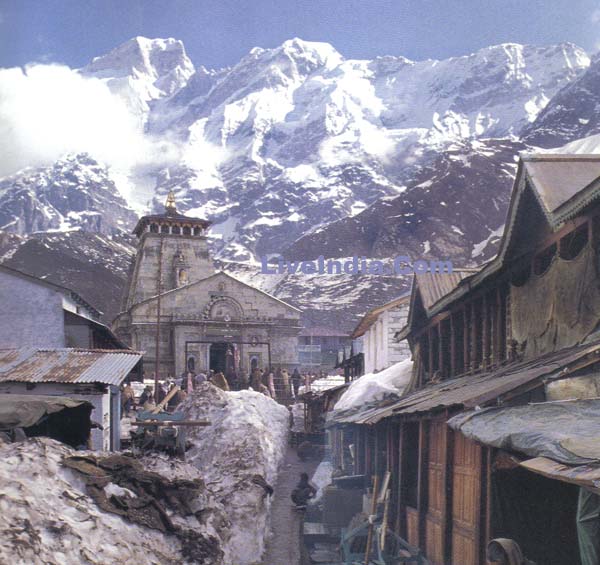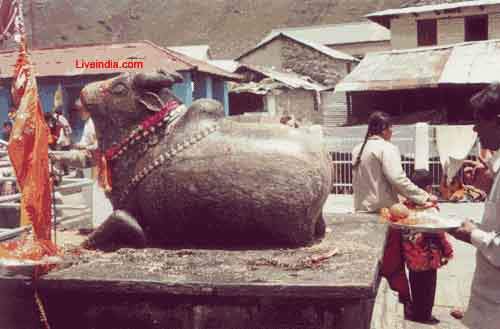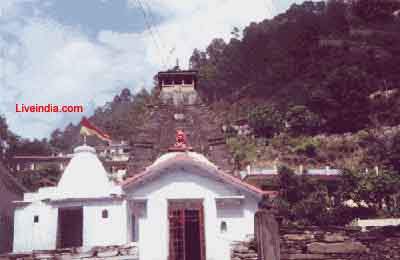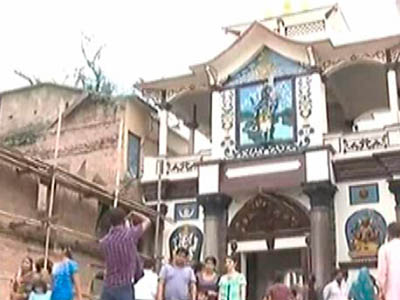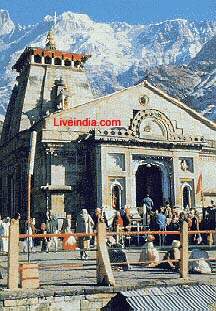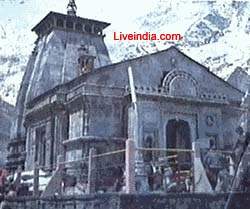 |
Kedarnath is amongst
the holiest pilgrimages for the devout Hindu. It is set amidst the stunning
mountainscape of the Garhwal Himalayas at the head of the Mandakini River.
Kedar is another name of lord Shiva, the protector & the destroyer.
Shiva is considered the embodiment of all passions - love, hatred, fear,
death & mysticism which are expressed through his various forms.
Date of reopening 28th
april 2004 & closing in the month of November 2004.
Kedarnath is the most
important Hindu shrine in Himalayas, and among the major Shiva temples,
of the country. Located at the source of the river Mandakini, Kedarnath
is one of the twelve Jyothirlingas, of Lord Shiva, and one of the Panch
Kedars.
Mythology identifies the
deity at Kedarnath temple, with the rump of a bull, a form assumed by Lord
Shiva, when eluding the Pandavas, who had come for repentance for killing
their kith and kin, in the great battle of Kurukshetra. When the Pandavas
followed him to the site, he dived into the ground leaving behind a hump
on the surface. This conical projection is worshipped as the idol in the
shrine. |
The remaining parts of the
body are worshipped at four other sites-the arms (Bahu) at Tungnath, mouth
(mukh) at Rudranath, navel (nabhi) at Madmaheshwar and hair (jata) at Kalpeshwar.
These five shrines collectively are known as the Panch Kedar.
It is believed that the
temple of Kedarnath, was constructed by the Pandavas. At the entrance of
the temple, is the statue of Nandi, the divine bull of Shiva. The wall
inside the temple, is exquisitely carved with images, and the temple houses
a shiva lingam, which is worshipped by hordes of pilgrims. The lingam,
here, unlike its usual form, is pyramidal.
At the approach of winters
in the month of November, the holy statue of Lord Shiva, is carried down
from Garhwal (Kedarkhand) to Ukhimath, and is reinstated at Kedarnath,
in the first week of May. It is at this time, that the doors of the temple
are thrown open to pilgrims, who flock from all parts of India, for a holy
pilgrimage.
Legends notwithstanding,
the shrine of Kedarnath is very scenically placed, and is surrounded by
lofty, snow - covered mountains, and grassy meadows covering the valleys.
Immediately behind the temple, is the high Keadardome peak, which can be
sighted from great distances. The sight of the temple and the peak with
its perpetual snows is, simply, an enthralling sight.
Devotees outside Kedarnath
Temple ,Around Kedarnath ,Vasuki Tal Situated at an altitude of 14, 200
ft, and 6 kms away from Kedarnath, Vasuki Tal is situated on the right
side of the valley. The crystal clear lake with stupendous scenic surroundings,
offers a splendid view for the nature buff.
Son Prayag
Located at the confluence
of the Mandakini and the Sone-Ganga, this quaint village is known for its
picturesque beauty.
Gaurikund
An ancient temple dedicated
to the Goddess Gauri or Parvati, the Gaurikund houses the metallic idols
of Gauri and Shiva. According to legend, Parvati meditated here for a long
time, to win Shiva as her consort. Ultimately, she succeeded, and the cosmic
couple were wed at Trijuginarayan.
Where To Stay
GMVN Tourist Bungalow,
Modi Bhavan, behind the temple. Punjab Sindh, next to the Post office.
|



